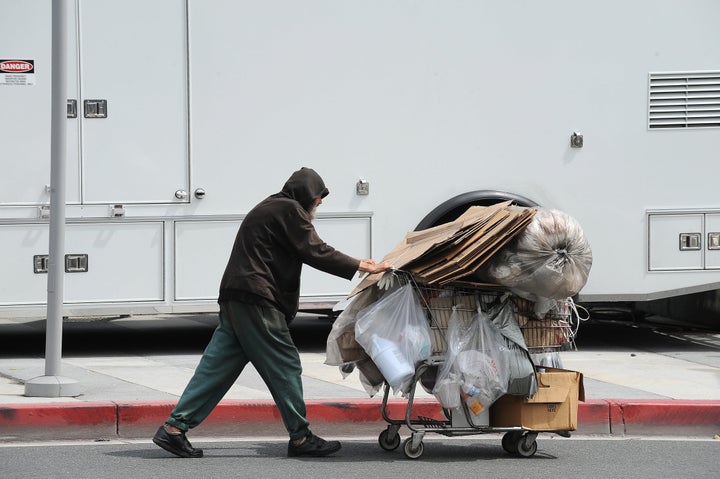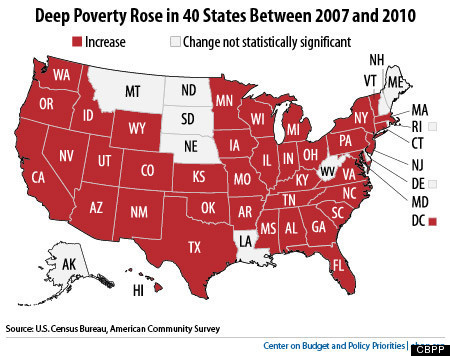
The closer one looks at the Census data on American poverty, the more discouraging it becomes.
It was already known that the national poverty rate climbed to 15.1 percent last year, the greatest percentage since 1993, and that the actual number of Americans living in poverty had hit 46.2 million, the highest number since the Census Bureau began measuring poverty in 1959.
It was known that the median household income fell more than 2 percent in 2010. And it was known that a million more children fell into poverty in 2010, bringing the total to about 15.7 million -- and that of all the children in America age six or younger, one in four now live in poverty.
The latest analysis of Census data, from the Center on Budget and Policy Priorities, further illustrates how widespread the problem of want in America has become. According to the CBPP, 39 states, plus the District of Columbia, have experienced significant rises in their levels of "deep poverty" in the past four years -- that is, people living on incomes that are less than half the poverty line.
No states saw a decline in their deep poverty rates.
The findings make clear how far-reaching the effects of the recession have been, and align with other studies that have shown deep poverty increasing in the U.S. over the past two decades. Nationwide, some 6.7 percent of Americans were living in deep poverty in 2010 -- the highest rate since the government started tracking this number in 1975. Nearly one in 10 children are counted in this category.
As the CBPP noted in an earlier blog post, one reason for the rise in deep poverty in recent years is that low-income families have access to fewer public resources than they used to. Skyrocketing unemployment and falling wages have also played a role.
The below graphic is by the Center for Budget and Policy Priorities:

